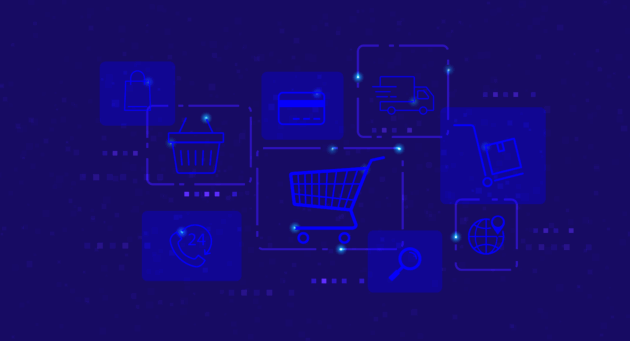The holiday season is the time to be in the moment. But this year, pioneering marketers aren’t just thinking about today — they’re planning for tomorrow. Evolving privacy regulations and changes to addressable media are putting marketers in a future-proofing mindset to meet their goals both today and in the future.
Holiday campaigns tend to be higher volume, which makes them ideal for marketers to test new ways to reach and resonate with consumers. And this year, it’s imperative that marketers test a variety of audience solutions, including contextual, as well as explore expanding their advertising onto retailers’ sites. This will not only accelerate their full-funnel commerce outcomes and reach incremental audiences now, but also strengthen their advertising models and prepare them for success in the next era of advertising.
If marketers don’t test and optimize now, they run the risk of using less-effective targeting strategies in the future, which results in wasted ad spend and the inability to personalize advertisements, leading to poorer consumer experiences across channels. Without driving forward on effective test-and-learn strategies today, Marketers also run the risk of receiving fragmented measurement that will make them unable to understand campaign efficacy.
Here are three holiday season strategies for marketers to yield end-of-year success while future-proofing their business:
1. Start with audiences, not channels.
The key to achieving improved outcomes through audience targeting this holiday season and beyond is by activating first-party data. Whether it be online or offline, this data will help marketers reach and engage high-intent and opted-in consumers who are most likely to buy their products or services.
First-party data ownership is an essential step. It is also critical to activate data in the most impactful way. One method to activate effectively is by using a platform that can enrich first-party data with more commerce insights across identifiers, product information, and engagement events. This process sets marketers up for more than just immediate success and builds sustainable models that learn in real time and can be optimized with every campaign to fortify their strategies for the future of addressability.
This enables marketers to create a foundation for audience understanding, helping fill in the gaps about what their audiences want and need. With these insights, marketers will better understand specific value that they offer, and the best way to demonstrate that value through their advertising.
2. Lean into contextual targeting.
Marrying first-party data with contextual signals creates a way to effectively engage audiences on the open internet. Contextual targeting delivers relevant ads by analyzing the content of a webpage — not the person browsing that page. However, contextual targeting still creates results comparable to one-to-one addressable advertising.
That’s because contextual targeting isn’t what it used to be. The industry is going beyond keyword targeting and enhancing contextual signals with first-party data to help marketers reach new consumers who are more likely to be in a buying mindset for their products and services.
Online ads are the fifth most popular channel for product discovery in 20211. At a time when consumers are asking for data privacy, contextual advertising is a privacy-safe way to put the right ads in front of the right consumers, in the right environments.
3. Include retailers’ sites in your media mix.
The consumer journey is no longer a linear path from discovery to purchase. Consumers are in a state of constant commerce, where they’re browsing, searching, and interacting with products and ads. Advertising through Retail Media, or targeted native ads on retailers’ sites, is an effective way for marketers to reach consumers at the digital point of sale.
According to Catalyst and Kantar, 37% of all online consumers who purchase products online visit retailer websites/apps prior to the moment of purchase 2, so marketers won’t want to leave them out of their media mix. Retail Media is also future-proofed since it leverages first-party data from retailers for both targeting and measurement, helping brands tie media spend to sales at the individual SKU level across the largest network of retailers with high-intent site visitors.
Every holiday season is critical for marketers, but there’s more at stake this year than ever before as the industry prepares for the future of addressability. Testing, learning, and optimizing now is the only way forward towards an addressable future that is sustainable, successful, and assuredly privacy-safe.
Talk to your Criteo representative to find out how you can drive immediate campaign results, while future-proofing your business this holiday season. And get more tips for your seasonal strategy inside the 2021 Holiday Commerce Report. Download your copy by filling out the form below.
1Criteo Consumer Sentiment Index Survey, April-June 2021, Global, n= 9,137, Base: Category shoppers (at least one online purchase of apparel, consumer electronics, home appliances, home furnishings, or sporting goods in the last 30 days).
2Catalyst and Kantar: The State of Ecommerce Landscape Study, April 2020.
















